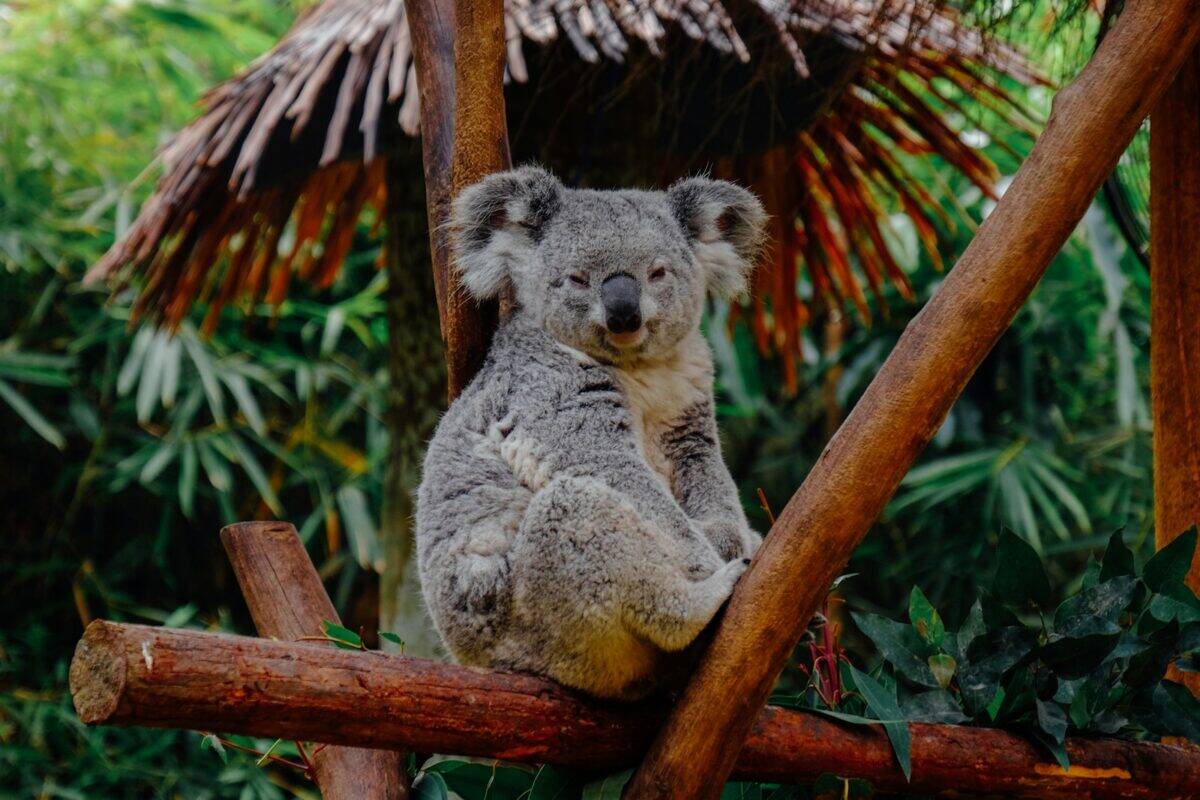Australia’s unique wildlife is epitomized by two of its most recognizable marsupials – the koala and the kangaroo. While both have become international symbols of the Land Down Under, these iconic animals couldn’t be more different in their biology, behavior, habitat preferences, and evolutionary adaptations. From the tree-dwelling, eucalyptus-munching koala to the ground-bound, hopping kangaroo, these marsupials represent fascinating examples of how evolution has shaped Australia’s diverse fauna. This comprehensive comparison explores the striking contrasts between these beloved Australian icons, detailing everything from their physical characteristics and dietary habits to their reproductive strategies and conservation status in the wild.
Evolutionary Origins and Classification
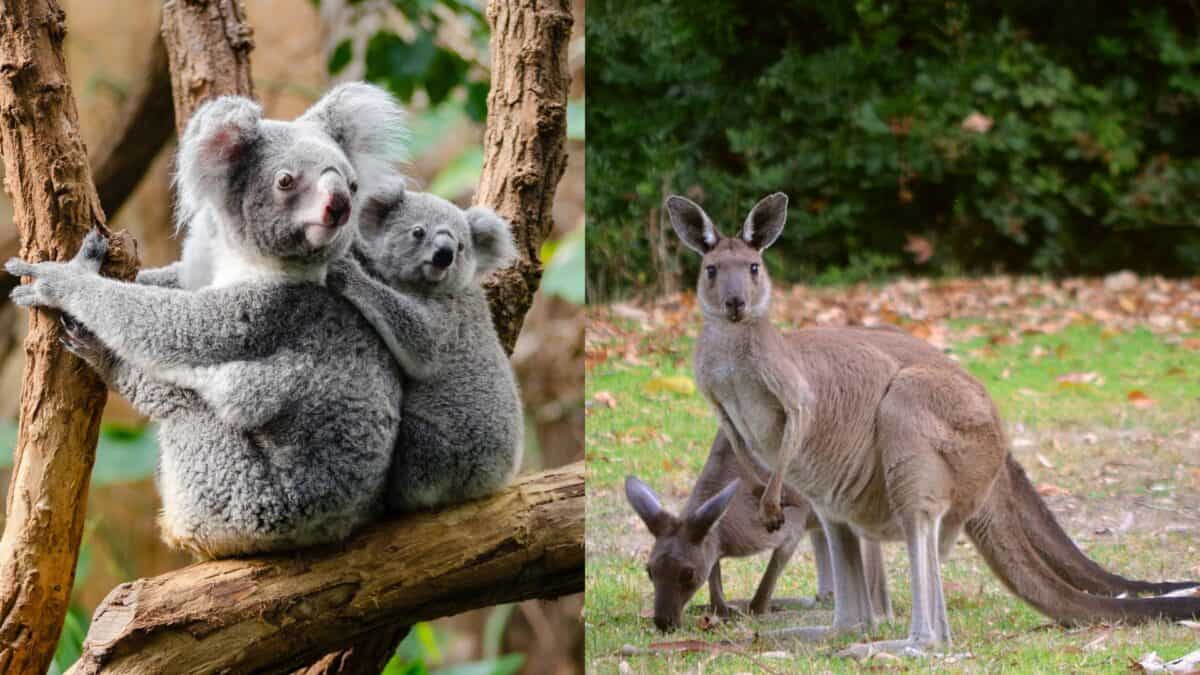
Though both koalas and kangaroos are marsupials, carrying their young in pouches, they belong to different taxonomic families that diverged millions of years ago. Koalas (Phascolarctos cinereus) are the only living members of the family Phascolarctidae, representing a specialized evolutionary branch that adapted to an arboreal, eucalyptus-dependent lifestyle. Kangaroos, conversely, belong to the family Macropodidae (meaning “big foot”), which includes approximately 60 species of kangaroos, wallabies, and related animals. Genetic evidence suggests these two marsupial lineages diverged around 40 million years ago, resulting in dramatically different evolutionary trajectories. While koalas specialized for a sedentary, specialized diet, kangaroos evolved for efficient terrestrial locomotion and adaptability to Australia’s variable landscapes.
Physical Characteristics and Adaptations
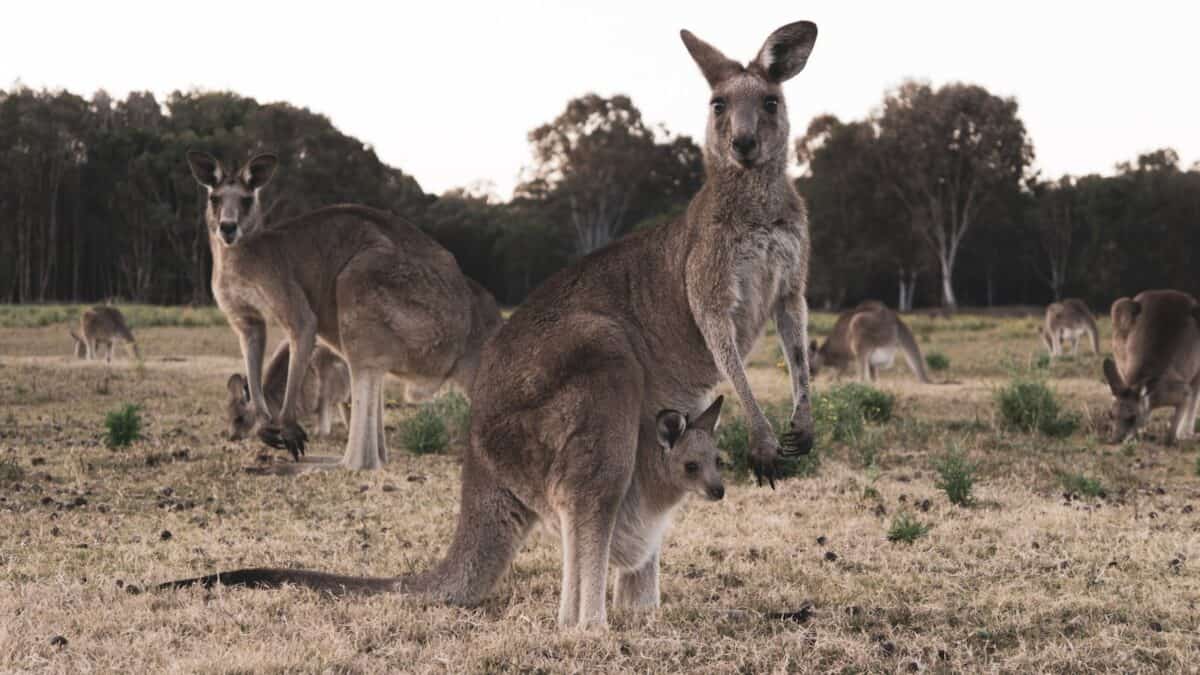
The physical differences between koalas and kangaroos perfectly illustrate their distinct ecological niches. Koalas are relatively small marsupials, typically weighing 4-15 kg (9-33 pounds), with rounded bodies, large ears, and distinctive nose. Their limbs are adapted for tree climbing, with sharp claws and opposable digits that help them grip branches. Perhaps most distinctive is their dense, woolly fur that protects them from both rain and temperature variations in their tree-top homes. Kangaroos, by contrast, are ground-dwelling marsupials that can reach significantly larger sizes, with red kangaroos (Macropus rufus) growing up to 90 kg (200 pounds) and standing over 2 meters (6.5 feet) tall. Their most notable physical adaptations include powerful hind legs designed for hopping, a strong muscular tail that serves as a balance counterweight, and elongated feet. These physical differences represent perfect examples of evolutionary adaptations to fundamentally different lifestyles.
Habitat and Geographic Distribution

The natural ranges of koalas and kangaroos highlight their differing habitat requirements. Koalas have a relatively limited distribution along the eastern and southeastern coasts of Australia, spanning from Queensland to South Australia. Their range is directly tied to the presence of suitable eucalyptus forests, which provide both their exclusive food source and habitat. Kangaroos, with their greater adaptability, inhabit nearly all of mainland Australia, from coastal regions to the harsh interior deserts. Different kangaroo species have specialized for various environments – eastern grey kangaroos prefer forests and woodlands, while red kangaroos thrive in the arid interior. This geographic versatility has allowed kangaroos to become one of Australia’s most widespread mammals, while koalas remain restricted to specific forest types. This difference in distribution clearly demonstrates the ecological flexibility of kangaroos compared to the specialized requirements of koalas.
Dietary Specialization Versus Adaptability

One of the most dramatic differences between these marsupials lies in their dietary strategies. Koalas are extreme dietary specialists, feeding almost exclusively on the leaves of approximately 30 species of eucalyptus trees out of the 700+ eucalypt species in Australia. This highly specialized diet requires remarkable digestive adaptations, including specialized gut bacteria that detoxify the poisonous compounds found in eucalyptus leaves and an extraordinarily long digestive tract that can reach up to 2 meters in length. Kangaroos, in stark contrast, are dietary generalists. As herbivores, they consume a wide variety of grasses, herbs, shrubs, and in some species, even fungi. Their multi-chambered stomachs allow for efficient digestion of tough plant materials through microbial fermentation. This dietary adaptability has been crucial to the kangaroo’s success across Australia’s variable and often harsh environments, while the koala’s specialization makes it particularly vulnerable to habitat changes.
Movement and Locomotion

Perhaps no characteristic better distinguishes these marsupials than their modes of locomotion. Koalas are slow-moving, tree-dwelling specialists whose movements are characterized by deliberate climbing and long periods of sedentary behavior. Their strong limbs and sharp claws allow them to scale eucalyptus trees with ease, where they may remain for days, moving only when necessary to find new food sources. They typically sleep 18-22 hours daily, conserving energy due to their low-nutrient diet. Kangaroos, by striking contrast, are among the most mobile of all mammals, having evolved a unique form of bipedal hopping that allows for remarkable efficiency at high speeds. A large red kangaroo can reach speeds of 70 km/h (43 mph) and cover 9 meters (30 feet) in a single bound. Their distinctive locomotion is not only energy-efficient but allows them to cover vast distances in search of food and water in Australia’s unpredictable climate. These fundamental differences in movement reflect their contrasting evolutionary strategies – energy conservation for the koala versus mobility for the kangaroo.
Social Structure and Behavior

The social lives of koalas and kangaroos reflect their different ecological needs and evolutionary histories. Koalas are primarily solitary animals with relatively simple social structures. Males establish and defend territories through vocalizations and scent marking, particularly during breeding season, but there is limited social interaction outside of mating. Females maintain home ranges that often overlap with several males, and young koalas typically disperse once independent. Kangaroos, however, display more complex social behaviors, often forming groups called “mobs” that can include dozens of individuals. These groups typically consist of females, their offspring, and several males arranged in a dominance hierarchy. This social structure provides benefits in predator detection and resource finding. The differences in sociality between these marsupials correlate directly with their ecological needs – the sedentary, resource-limited koala benefits from solitary life, while the mobile, open-habitat kangaroo gains advantages from group living.
Reproductive Strategies and Development

Though both animals share the marsupial trait of pouch-rearing young, their reproductive strategies show significant variation. Koalas have a relatively slow reproductive rate, typically producing one offspring (called a joey) per year during the summer breeding season. After a short gestation of 35 days, the bean-sized, embryonic joey climbs into the mother’s downward-facing pouch, where it attaches to a teat and continues development for about six months. The joey then rides on its mother’s back for another six months before independence. Koalas reach sexual maturity around 2-3 years of age. Kangaroos employ a more complex reproductive strategy that includes embryonic diapause – the ability to delay the development of an embryo until environmental conditions are favorable or until a previous joey leaves the pouch. Female kangaroos can simultaneously support three young at different developmental stages: an embryo in diapause, a joey in the pouch, and an older joey outside the pouch but still nursing. This reproductive flexibility gives kangaroos a significant advantage in Australia’s unpredictable climate, allowing them to maximize reproductive success when conditions permit.
Sensory Abilities and Intelligence
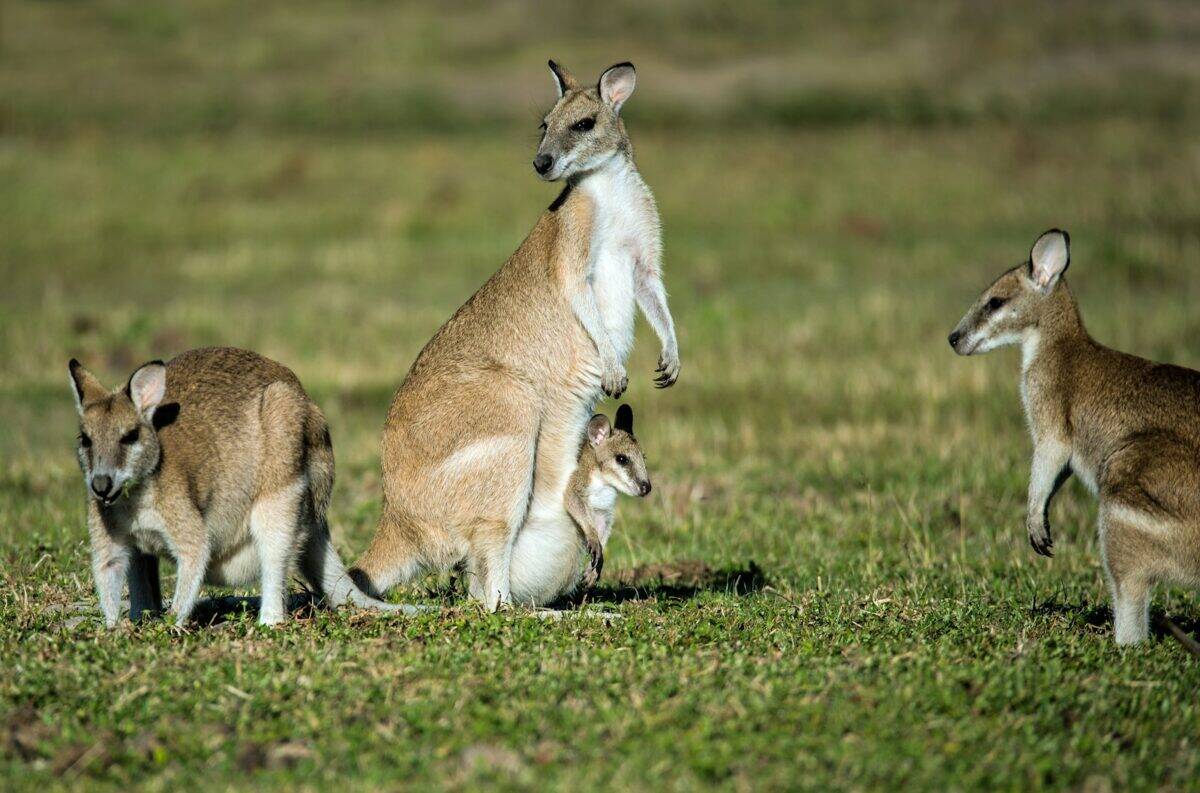
The sensory capabilities of koalas and kangaroos have evolved to suit their specific ecological niches. Koalas have relatively poor vision, but excellent smell, which helps them distinguish between toxic and non-toxic eucalyptus leaves – a critical skill for their survival. Their hearing is well-developed, particularly for detecting the low-frequency vocalizations used in mating and territorial displays. Koalas have relatively small brains relative to body size, which some scientists believe is an energy-conservation adaptation to their low-calorie diet. Kangaroos possess more balanced sensory capabilities, with well-developed vision, hearing, and smell that serve their needs as ground-dwelling, social animals. Their eyes are positioned to give good panoramic vision for detecting predators, while their mobile ears can independently rotate to locate sounds. Cognitively, kangaroos demonstrate more complex learning and social recognition abilities, reflecting the greater cognitive demands of their more dynamic social and ecological environments.
Predators and Defense Mechanisms
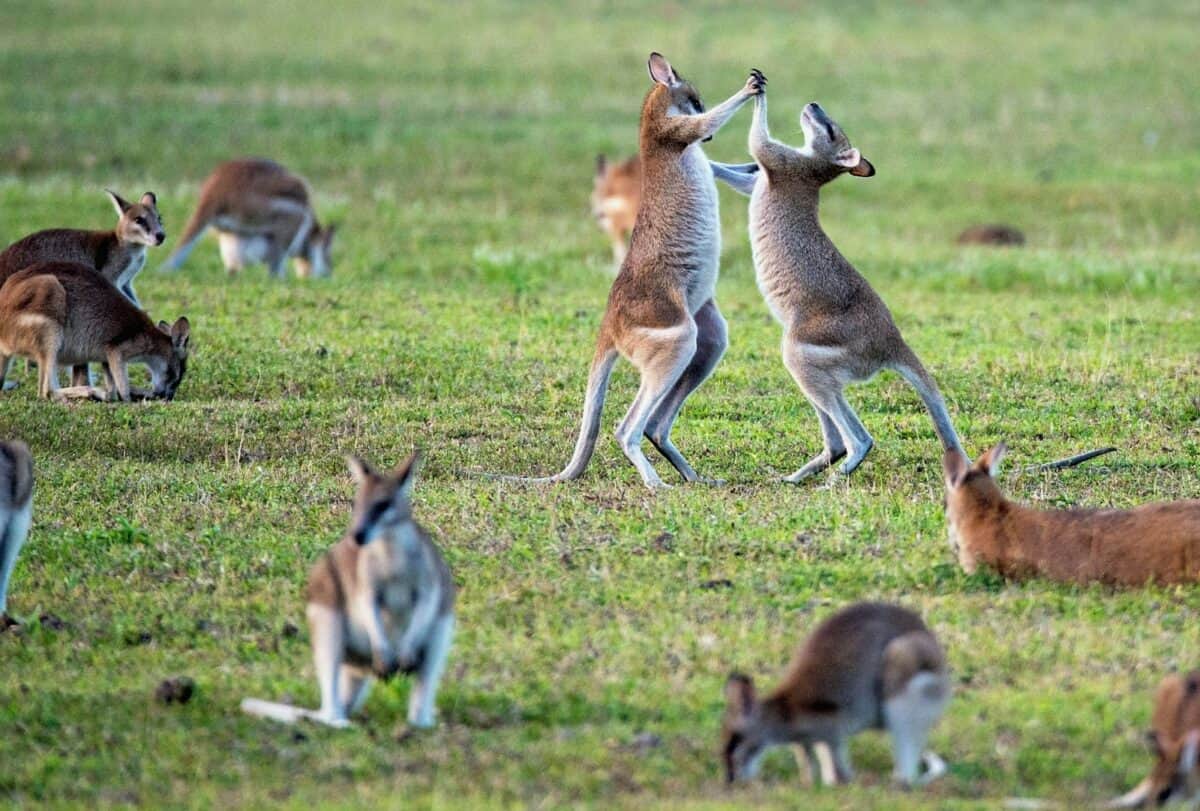
Despite their iconic status, both koalas and kangaroos face natural predation in the wild, though their defense strategies differ significantly. Koalas, with their arboreal lifestyle, primarily avoid predation by remaining high in trees, away from most ground-dwelling predators. Their primary natural predators include powerful birds of prey like wedge-tailed eagles and, historically, the marsupial lion (now extinct). When threatened, koalas have limited defense options beyond retreating higher into trees or, if cornered, using their sharp claws and teeth. Kangaroos employ more active defense strategies befitting their ground-dwelling lifestyle. Their powerful hind legs can deliver potentially lethal kicks to predators, while larger male kangaroos may also use their arms to grapple with threats. When pursued, kangaroos often flee toward water bodies, where they may use their swimming ability to evade predators or potentially drown pursuing dogs or dingoes by holding them underwater with their forepaws. The contrasting defense strategies of these marsupials – passive avoidance versus active defense – reflect their fundamentally different physical capabilities and ecological adaptations.
Human Interactions and Cultural Significance
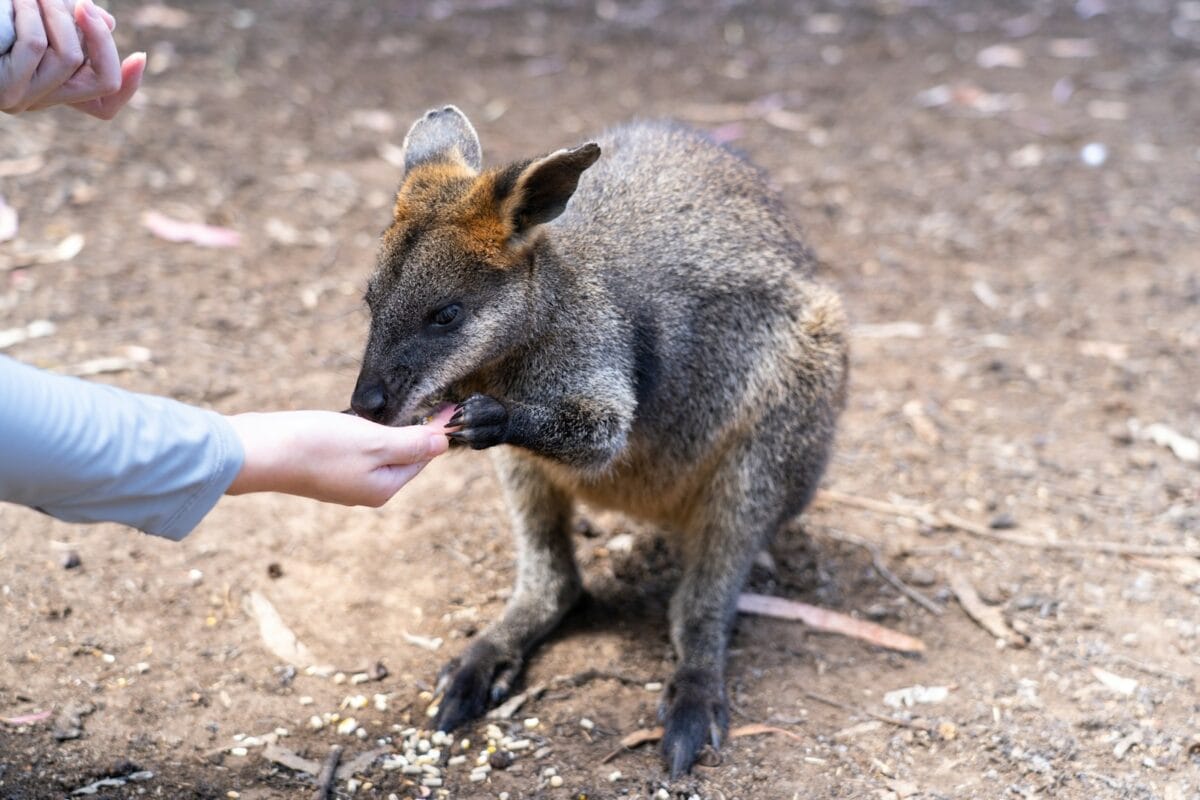
Both koalas and kangaroos hold special places in Australia’s cultural identity, though their relationships with humans have evolved differently. Koalas, with their teddy bear-like appearance and docile nature, have become global symbols of Australia’s unique wildlife. Their appeal has made them central to wildlife tourism, appearing on countless souvenirs and featuring prominently in conservation campaigns. Indigenous Australian cultures have incorporated koalas into their stories and art for thousands of years, often depicting them as ancestral beings. Kangaroos have an even more prominent place in Australia’s national identity, appearing on the country’s coat of arms, currency, and as the logo for national sports teams and Qantas, the national airline. Unlike koalas, however, kangaroos have a more complex relationship with human activities – they are both cultural icons and, in some contexts, considered agricultural pests due to competition with livestock for grazing resources. Some kangaroo species are commercially harvested for meat and leather under government-regulated programs, creating an ongoing tension between conservation, cultural significance, and economic use.
Conservation Challenges and Threats

Despite their iconic status, both koalas and kangaroos face significant conservation challenges, though the nature and severity of these threats differ substantially. Koalas are currently listed as vulnerable to extinction in parts of their range, with population declines driven primarily by habitat loss from urban development, fragmentation of eucalyptus forests, and climate change impacts including intensified bushfires and drought. They also face threats from dog attacks, vehicle strikes, and disease – particularly chlamydia, which affects reproductive success. The koala’s specialized diet and habitat requirements make it particularly vulnerable to environmental changes. Kangaroos, while generally more abundant, face different conservation challenges. Some species, particularly the larger and more common varieties like the eastern grey and red kangaroo, have actually benefited from certain human activities, including the creation of artificial water sources and the removal of predators. However, less common species face habitat loss, and even abundant populations can experience dramatic boom-and-bust cycles during droughts. The contrasting conservation situations of these marsupials highlight how ecological specialization (koalas) versus adaptability (kangaroos) influences species’ resilience to environmental change in the Anthropocene era.
The koala and kangaroo represent fascinating examples of evolutionary divergence within Australia’s marsupial lineage, each adapting to dramatically different ecological niches through specialized physical traits, behaviors, and life history strategies. While the sedentary, tree-dwelling koala evolved extreme dietary specialization and energy conservation, the ground-dwelling kangaroo developed remarkable locomotion efficiency, social complexity, and dietary flexibility. These differences extend to nearly every aspect of their biology – from reproduction and sensory capabilities to geographic distribution and conservation status. Together, they showcase the extraordinary diversity that evolved within Australia’s isolated ecosystem, where marsupials rather than placental mammals became the dominant mammalian form. As Australia faces growing environmental challenges from climate change, habitat loss, and introduced species, understanding the unique adaptations and requirements of these iconic marsupials becomes increasingly important for ensuring their survival for future generations to appreciate and study.
- America’s Most Endangered Mammals And How to Help - August 9, 2025
- The Coldest Town in America—And How People Survive There - August 9, 2025
- How Some Birds “Steal” Parenting Duties From Others - August 9, 2025

